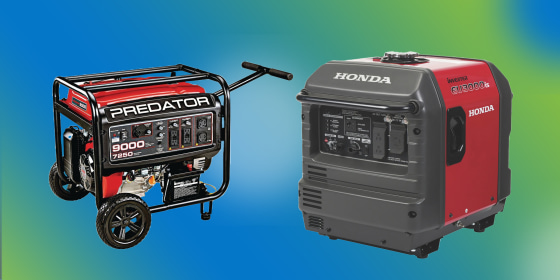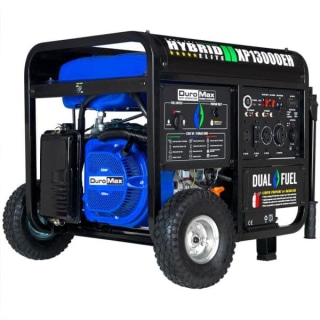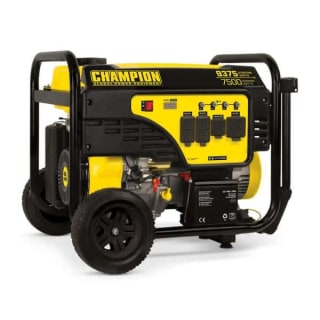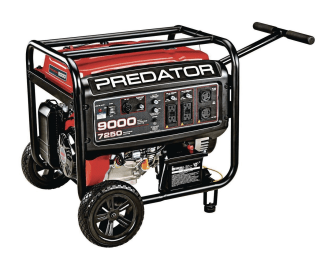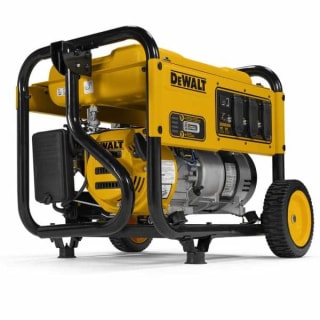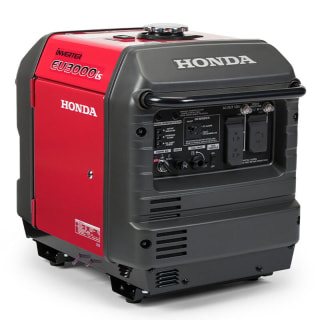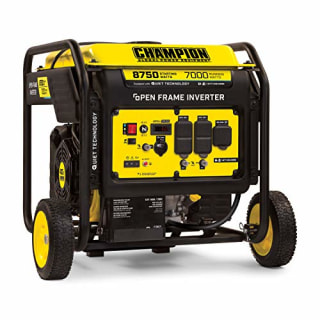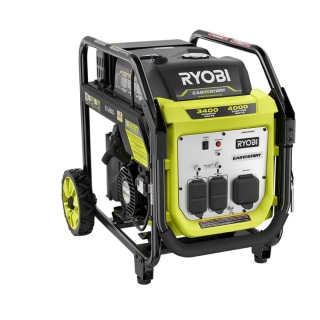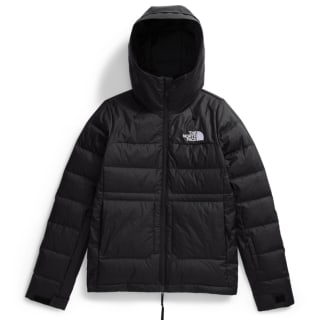Whether you’re in an area that’s still getting hit by winter storms or you want to prepare for hurricane season, a portable generator is a great emergency tool worth investing in. An emergency generator can produce enough power to keep your gadgets juiced and appliances running, even if you aren’t near a working outlet.
SKIP AHEAD Generators to shop | How to use a generator safely
Generators can run the gamut from small models that’ll power a few personal items to larger models that’ll keep your whole house powered without skipping a beat — if you aren’t well-versed in the latest generator tech, sifting through what’s available can be a lot. Ultimately, experts said that you should figure out which electronics you want to power in order to determine the best portable generator for your needs. “The end user needs to confirm what they want to be energized during a power outage and add up the watts to the best of their ability,” explained Angelo Cristofolo, manager of residential electrical sales and installations at Air Group, LLC.
We spoke to experts in the electrical industry about the different types of portable generators. We also rounded up some highly rated portable generators across various price points and wattages, and we consulted safety guidance from the U.S. Department of Energy and the Occupational Safety and Health Administration to outline how to safely use a generator.
What is a portable generator?
These days, there are two main types of portable generators: conventional generators and inverter generators, both of which can run on gasoline, propane or diesel fuels. Propane isn’t as energy efficient as gasoline, but it performs better in colder weather and typically creates less engine maintenance, according to the U.S. Department of Energy. Neither portable generator should ever be used inside the house, as they can cause fires and produce potentially odorless and deadly carbon monoxide gas, the U.S. Department of Energy says.
Conventional generators are the larger, louder and more powerful type of portable generator. They’re typically strong enough to power larger electronics and appliances like refrigerators and televisions.
Inverter generators are smaller and less powerful than conventional generators, but they also provide cleaner energy and their engines power up or down depending on demand. “Most inverter generators are small so they are limited [in] what you can power up, but [they are] convenient, lightweight and efficient for small appliances and devices,” Cristofolo explained. Because inverter generators maintain a more consistent current, they also tend to be more expensive.
Both conventional generators and inverter generators require refueling after a certain amount of time — often eight to 10 hours, depending on the load — so even with a few backup cans of gas, they’re ideal for shorter periods of time.
That said, both types of generators vary in how much power they can put out. So, as you shop for the best generator for you, tally up how many watts of power you’ll need and buy accordingly. This chart from Lowe’s is a good starting point if you aren’t sure how much wattage you need. Some devices — like refrigerators and window AC units — have both running watts and starting watts to consider. Cristofolo explained that the starting watts are “that initial burst of power needed to start the [device],” while the running watts are what’s needed to keep the device powered.
Portable generators to shop
The experts we spoke to said that conventional generators can be useful for powering an entire portion of the house, while inverter generators provide the clean energy needed for more sensitive electronics like cell phones. Since portable generators often weigh hundreds of pounds, all of the options below either come with wheels or have the option to purchase a wheel kit separately. Each option also has a low oil shutdown feature that automatically turns the machine off when it senses that it’s running out of fuel. Below, we rounded up highly rated options across both types of portable generators, all of which clearly state their maximum running wattage and starting wattage — we top off each recommendation with pertinent takeaways to help your decision.
Conventional generators
Duromax 10500-Watt Dual Fuel Portable Home Power Generator
Wattage: 10,500 running watts, 13,000 starting watts | Fuel type: Gasoline or propane | Tank size: 8.3 gallons | Start type: Electric switch, recoil start | Weight: 236 pounds
The Duromax 10500-Watt Dual Fuel Portable Home Power Generator features an idle control that will lower the RPMs of the generator when it’s not being used in order to preserve fuel and reduce noise levels, according to the brand. With a 4.4-star average rating from more than 2,500 reviews, this Duromax generator is a bestseller at Home Depot.
Champion 9375/7500-Watt Electric Start Gas Portable Generator
Wattage: 7,500 running watts, 9,375 starting watts | Fuel type: Gasoline | Tank size: 5.7 gallons | Start type: Electric switch, recoil start | Weight: 199 pounds
This portable generator from Champion uses Cold Start Technology to get the machine up and running quickly in cold weather, according to the brand. Another popular pick at Home Depot, the Champion Portable Generator has a 4.7-star average rating from more than 2,300 reviews.
Predator 9000-Watt Gas Powered Portable Generator
Wattage: 7,250 running watts, 9,000 starting watts | Fuel type: Gasoline | Tank size: 8 gallons | Start type: Electric switch, recoil start | Weight: 201 pounds
According to Predator, the 9000-Watt Gas Powered Portable Generator can run for up to 13 hours at 50 percent load. It has a 4.8-star average rating from more than 2,100 reviews on Harbor Freight.
DEWALT 4000-Watt Manual Start Gas-Powered Portable Generator
Wattage: 4,000 running watts, 4,500 starting watts | Fuel type: Gasoline | Tank size: 3.4 gallons | Start type: Manual, recoil start | Weight: 123 pounds
Though this portable generator from DEWALT is one of the smallest options on our list, the brand says it offers up to 10 hours of runtime at 50 percent load. This is also the only portable generator on our list with CO Protect technology — the machine will shut off automatically if it detects poisonous carbon monoxide in the air, according to the brand. This generator from DEWALT has a 4.5-star average rating from more than 400 reviews at Home Depot.
Inverter generators
Honda EU300iS
Wattage: 2,800 running watts, 3,000 starting watts | Fuel type: Gasoline | Tank size: 3.4 gallons | Start type: Electric, recoil start | Weight: 134 pounds
The Honda EU300iS Portable Inverter Generator runs at a quiet 50 decibels (dB) at a 25 percent load — according to the experts at The Generator Store, anywhere from 49 to 60 decibels is “no louder than normal speech.” This inverter generator features CO Minder to monitor carbon monoxide levels and automatically shut off if there are harmful levels of the gas in the air. The Honda EU300iS boasts a 4.7-star average rating from more than 280 reviews at Northern Tool. This inverter generator doesn’t have wheels, but you can buy a 2-wheel kit separately.
Champion Power Equipment 100520 8750-Watt DH Series Inverter
Wattage: 7,000 running watts, 8,750 starting watts | Fuel type: Gasoline | Tank size: 4.2 gallons | Start type: Electric switch, recoil start | Weight: 155 pounds
This inverter generator from Champion can run for up to 10 ½ hours at 25 percent load, according to the brand. It’s slightly noisier than other inverter generators at 72 dB, but it’s also more powerful than most inverter generators and quieter than most portable generators with similar wattage levels. This inverter generator has a 4.6-star average rating from more than 3,700 reviews on Amazon.
If you’re looking for a quieter and less powerful model with a longer runtime, Champion sells another inverter generator that can run for up to 22 hours on gas at 25 percent load and runs at 64 dB.
RYOBI 4000-Watt Gasoline Powered Digital Inverter Generator
Wattage: 3,400 running watts, 4,000 starting watts | Fuel type: Gasoline | Tank size: 3.2 gallons | Start type: Electric switch, recoil start | Weight: 85 pounds
At 85 pounds, this inverter generator from RYOBI is the lightest option on our list. According to the brand, it can run for up to 12 hours at 50 percent load, and it features CODetect shutoff technology that automatically turns the machine off if it detects dangerous levels of carbon monoxide in the air. This generator has a 4.3-star average rating from more than 600 reviews at Home Depot.
How to use a portable generator safely
Because portable generators are powered by gas, the exhaust emits carbon monoxide — and if a portable generator is positioned too close to an enclosed space, it can emit enough gas to become deadly. The Consumer Product Safety Commission is working on regulating portable generators more closely due to this hazard: In February, the U.S. agency released a report recommending a new mandatory standard to equip portable generators with automatic shut-off features when the machines detect carbon monoxide at an unsafe level.
Whether the portable generator you buy has an auto shut-off feature, OSHA offers general safety guidance to help people avoid carbon monoxide poisoning:
Never use a generator indoors or in an enclosed space like a garage or a basement
Make sure a generator has 3 to 4 feet of clear space on all sides and above it to ensure adequate ventilation
Do not use a generator anywhere near doors, windows and vents where carbon monoxide might filter in
Generators can also be an electrocution hazard if you don’t use them properly. OSHA and the U.S. Department of Energy offer the following guidance to help avoid shock and electrocution:
Never attach a generator directly to the electrical system of a structure unless an electrician has installed the generator with a transfer switch
Plug electrical appliances directly into the generator using the manufacturer’s supplied cords or extension cords that are grounded (3-pronged)
Never use frayed or damaged extension cords
Only use extension cords that are appropriately rated in watts or amps
Keep your generator dry and under an open structure
Catch up on NBC Select's in-depth coverage of personal finance, tech and tools, wellness and more, and follow us on Facebook, Instagram and Twitter to stay up to date.
